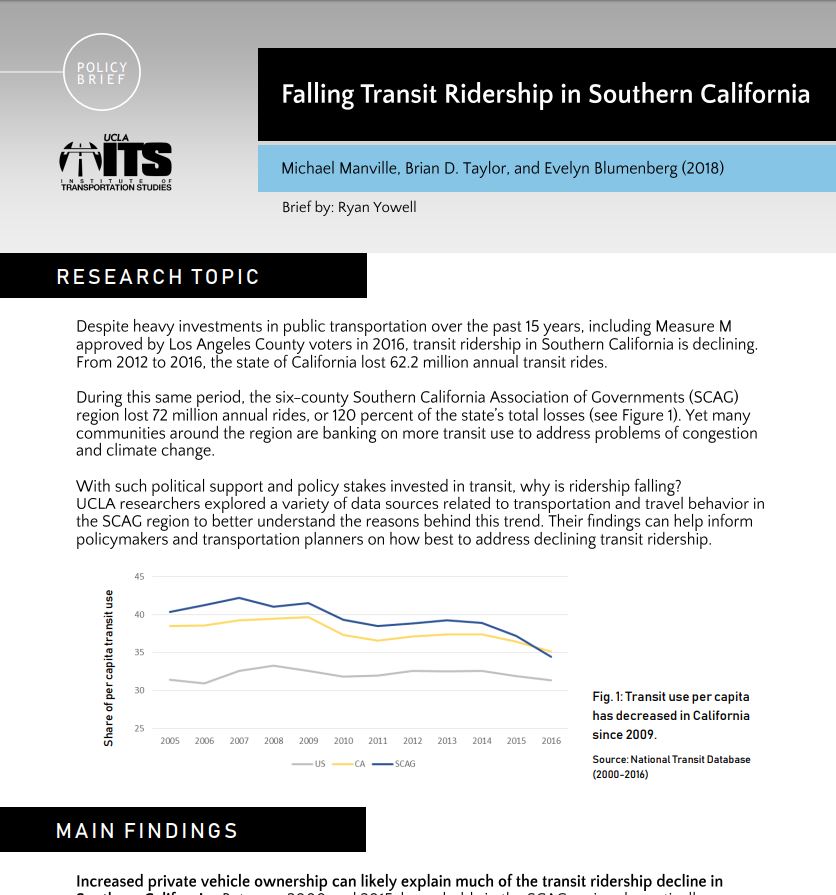Date: January 31, 2018
Author(s): Michael Manville, Brian D. Taylor, Evelyn Blumenberg, Ryan Yowell
Abstract
Transit ridership in Southern California has been declining despite heavy investments in public transportation. This research found that increased private vehicle ownership is a major factor in the transit ridership decrease. Between 2000 to 2015, households in Southern California increased their vehicle ownership from 1.7 to 2.4 vehicles per household. Vehicle ownership has also increased among households with historically high transit use.
About the Project
In the last ten years transit use in Southern California has fallen significantly. This report investigates that falling transit use. The project examines patterns of transit service and patronage over time and across the region and considers an array of explanations for falling transit use: declining transit service levels, eroding transit service quality, rising fares, falling fuel prices, the growth of Lyft and Uber, the migration of frequent transit users to outlying neighborhoods with less transit service, and rising vehicle ownership. While all of these factors probably play some role, the research concludes that the most significant factor is increased motor vehicle access, particularly among low-income households that have traditionally supplied the region with its most frequent and reliable transit users.


